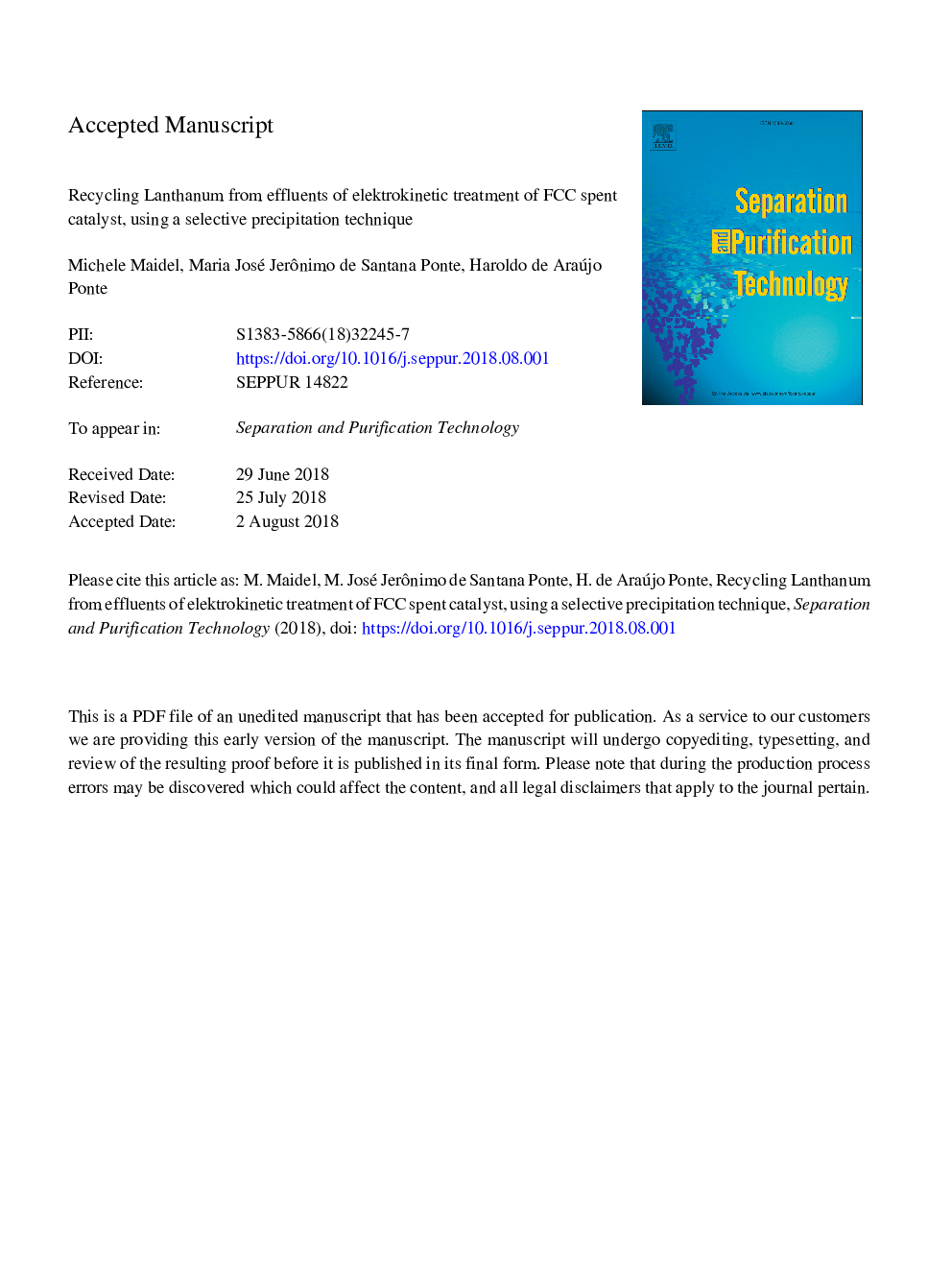| Article ID | Journal | Published Year | Pages | File Type |
|---|---|---|---|---|
| 7043424 | Separation and Purification Technology | 2019 | 23 Pages |
Abstract
The extraction of metals from FCC spent catalysts reduces the toxicity of this residue and is a convenient source of alternative raw-material for those elements. To this end, the electrokinetic treatment has proved to be promising and has contributed to the restoration of the deactivated catalyst crystalline structure. Among the removed elements, there are rare earth metals, such as lanthanum, which are in demand in the high-tech industry. The recovery of this metal using the electrokinetic treatment, and the advantages of this method regarding the widespread techniques have not been explored in the literature yet. Thus, the present work evaluated the recovery of lanthanum via selective precipitation of lanthanum in an effluent solution derived from electrokinetic treatment of a FCC spent catalyst used in Brazilian refineries, and compared this process to the acid leaching of the same residue. It was possible to remove up to 84% of lanthanum by both techniques; however, the electrokinetic treatment used less reagent and had lower energy consumption than the acid leaching. The influence of reagent concentration, pH, and temperature in the reaction conversion were also studied by statistical analysis, and satisfactory models were obtained for the worked conditions. The kinetics of the precipitation reaction of lanthanum contained in the electrokinetic solution was evaluated, and an 74.6â¯kJ·molâ1 activation energy was obtained.
Related Topics
Physical Sciences and Engineering
Chemical Engineering
Filtration and Separation
Authors
Michele Maidel, Maria José Jerônimo de Santana Ponte, Haroldo de Araújo Ponte,
